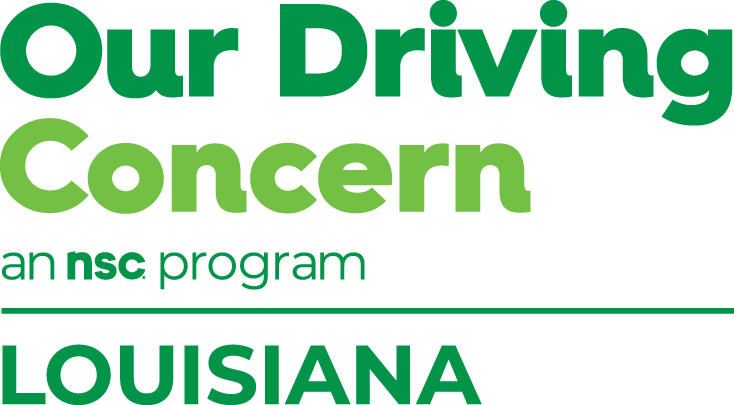Don’t Be a Spooky Driver!
 October is one of Louisiana’s deadliest months each year in terms of preventable roadway crashes, in part because of risks associated with pedestrians and trick-or-treaters out at night on Halloween. Thanksgiving is coming up quickly, too, which means heavier-than-normal traffic. Employers should remind employees to enjoy the holidays safely. Discuss these safe-driving habits and share these tips from the National Highway Traffic Safety Administration:
October is one of Louisiana’s deadliest months each year in terms of preventable roadway crashes, in part because of risks associated with pedestrians and trick-or-treaters out at night on Halloween. Thanksgiving is coming up quickly, too, which means heavier-than-normal traffic. Employers should remind employees to enjoy the holidays safely. Discuss these safe-driving habits and share these tips from the National Highway Traffic Safety Administration:
- Never drive after indulging in any impairing substances and designate a sober driver.
- Put the phone away.
- Drive at the speed limit.
- Buckle up: every seat, every time.
- Report any impaired drivers to law enforcement.
Be sure your employees are prepared for any outings by encouraging them to have a plan in place for safe driving and to get enough sleep to avoid drowsy driving.
Drowsy Driving is Impaired Driving
 Before getting too excited for the holidays, remind employees that Daylight Saving Time ends Sunday, Nov. 3. Be sure to also remind everyone on your team to get adequate sleep to avoid fatigue and risks associated with drowsy driving. Adults need 7-9 hours of sleep to reach peak performance levels, according to the National Sleep Foundation. Drowsy Driving Prevention Week is Nov. 3–9. Take advantage of this time to explain the risks of fatigued driving. One in 25 adult drivers reportedly has fallen asleep while driving. In 2021, NHTSA reported there were 684 fatalities related to fatigue and drowsy driving. The total estimated cost of these crashes to society was pegged at $109 billion. Driving while drowsy worsens drivers’ reaction time, similarly to driving under the influence of alcohol. Driving after being awake for more than 20 hours is the equivalent of driving with a BAC of .08%. The National Sleep Foundation offers these drowsy-driving warning signs:
Before getting too excited for the holidays, remind employees that Daylight Saving Time ends Sunday, Nov. 3. Be sure to also remind everyone on your team to get adequate sleep to avoid fatigue and risks associated with drowsy driving. Adults need 7-9 hours of sleep to reach peak performance levels, according to the National Sleep Foundation. Drowsy Driving Prevention Week is Nov. 3–9. Take advantage of this time to explain the risks of fatigued driving. One in 25 adult drivers reportedly has fallen asleep while driving. In 2021, NHTSA reported there were 684 fatalities related to fatigue and drowsy driving. The total estimated cost of these crashes to society was pegged at $109 billion. Driving while drowsy worsens drivers’ reaction time, similarly to driving under the influence of alcohol. Driving after being awake for more than 20 hours is the equivalent of driving with a BAC of .08%. The National Sleep Foundation offers these drowsy-driving warning signs:
- Finding it hard to focus on the road, frequent blinking or heavy eyelids.
- Starting to daydream, wandering eyes and disconnected thoughts.
- Having trouble remembering the last few miles driven.
- Missing an exit or ignoring traffic signs.
- Yawning repeatedly or rubbing your eyes.
- Finding it hard to keep your head up or nodding off.
- Drifting from your lane, tailgating, or hitting a shoulder rumble strip.
- Feeling restless and irritable, or becoming aggravated with common annoyances such as sitting in traffic.
Please share these National Safety Council tips to reduce drowsy-driving:
- Crash-avoidance technologies: Safety technologies such as drowsiness alert and lane departure warnings can detect common drowsy driving patterns and warn drivers to stay in their lane or take a break.
- University interventions: College students tend to sleep less than average, with some estimates at less than six hours a night. Education programs aimed at college students may help curb drowsy driving and instill healthier behaviors that can last into adulthood.
- Getting more sleep: According to the American Academy of Sleep Medicine and the Sleep Research Society, adults should get seven or more hours of sleep each night.
- Medication labels: Expert analysis by Consumer Reports found that drug side-effect warnings are not always clear. New labeling guidelines may help drivers understand when to drive or not drive after taking these medications.
- Employer action: Workplaces with strong off-the-job safety and health programs can include key information on getting sufficient sleep and refraining from drowsy-driving.
